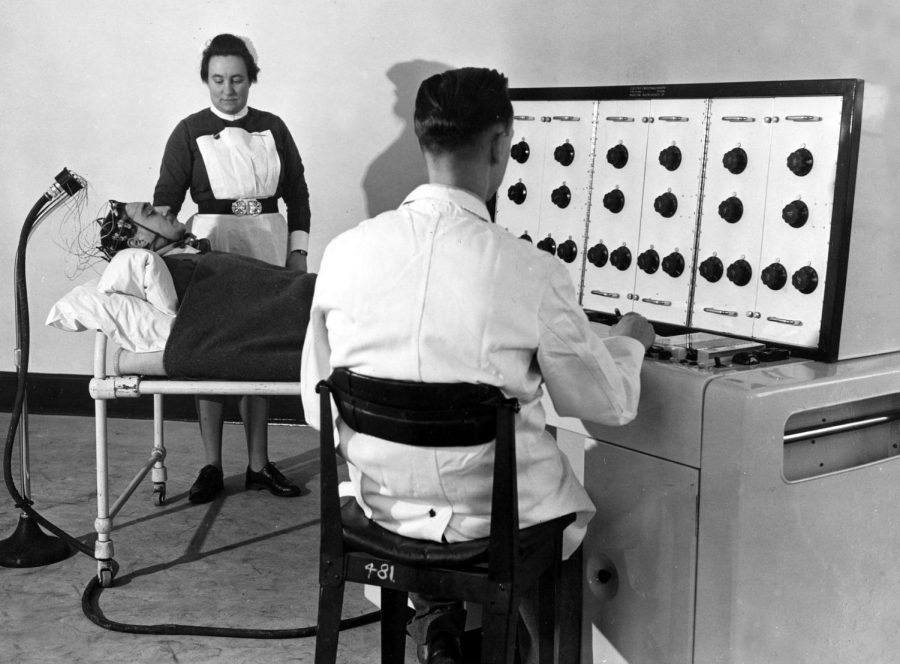Psychology Ethics: Milligram Experiment
Yale professor, Stanly Milgram conducted an experiment in 1963. He wanted to see how influential peer pressure was in Nazi Germany in WW2. He wanted to understand if the Nazis saw the wrong in what they were doing but had to follow the orders, or if they had become brainwashed and thought they were in the right because people told them they were right. Milgram wanted to test and see how people would react to an authority figure telling them to go against what was “right” and how far they would go with listening to the authority figure.
Experiment:
The experiment consisted of 3 people:
– A Teacher (test subject): They were the ones being studied. They were told to ask the students a series of questions. If the student answered wrong, they would press a button that would administer a (fake) electric shock to the student. They were told the shocks were mild. The experimenter was in the same room as them, but the student was in a separate room from them.
– An Experimenter: The “teacher” was told the experimenter would look over the electrical shocks and up the voltage each time the button was pressed. The real reason they were there was to pressure the “teacher” to press the button if they started to seem hesitant. The experimenter was meant to act as an authority figure during this experiment. They were in the same room as the teacher but different than the student.
– A Student (actor): They were the ones pretending to be shocked and purposely answering questions wrong. They never actually got harmed or shocked during this experiment. The experimenter and teacher were in a different room next to them and the student was in the room alone.
The teacher and the student were sitting in separate rooms next to each other. With each wrong response the voltage of the electric shocks went up starting at 15 volts then going up in increments of 15 till they reached 450 volts. All the shocks were nonexistent. The actor/student and experimenter knew the shocks were fake, but the teacher/test subject thought the shocks were real.
The student/actor would complain more and more as the shocks went on. Eventually they would start to complain about how they had a heart condition and how this probably was not heathy for them. At 300 volts they would bang on the wall and demand to be released. After this the student/actor would stay silent for the rest of the experiment as the “shocks” continued leading the teacher to believe they killed or greatly injured them (remember the actor and teacher where in separate rooms to the teacher couldn’t see the actor).
Whenever the teachers seemed hesitant or asked if they should go on the experimenter said one of the following phrases to further pressure them to go on.
“Please continue.”
“The experiment requires that you continue.”
“It is absolutely essential that you continue.”
“You have no other choice; you must go on.”
These circumstances and pressure made it very difficult for test subjects to leave.
Results:
For the 40 trials done, 68% of them continued giving all ethical shocks up to 450 volts. This shows peer pressure does heavily influence people’s behaviors even when they did not agree with or like what they were doing. This can prove Milgram’s hypothesis that the Nazis were not brain washed but rather peer pressured into doing their crimes, but most people would argue one experiment alone does not give an accurate glimpse into what the Nazis where thinking.
Another thing learned from this is how people are more likely to be obedient if there is an authority figure present. If the teachers were in the room alone and the student was in the next room banging on the wall it is very unlikely that they would continue the shocks without added pressure.
Why is it unethical?
This psychology experiment at the time it was done was ethical. But with today’s standards (set by the American Psychology Association or APA) it is very unethical even though no one was physically harmed. The APA has updated and revised their guidelines multiple times since the Milgram experiment.
The main policy the experiment went against was that the subjects were put under a lot of stress and Milgram or Yale University did nothing to undo the damage they did to these people. One rule for psychological experiments is to help undo any damage done to the test subjects (even though no lasting damage should be done in the first place.
Another one of the reasons this was unethical they did not go over what the experiment would actually be like with the test subjects. They told them the shocks would cause a minimal amount of pain which is not true. Informed consent is required for psychology experiments, and it is when an experimenter gives a brief overview of what to expect, the test subjects did not expect for the “students” to be in a large amount of pain as was (falsely) displayed.
In a normal experiment test subjects can leave whenever they want without getting pressured to stay. For the Milgram experiment this is not true, the experiment was actually centered around whether they would stay or not, which would never be okay by today’s standards. Pressuring someone to stay when they are clearly uncomfortable with the experiment is highly unethical.
Another unethical aspect about this experiment was that for experiments minimal amount of mental distress is allowed to be done to test subjects. The amount of stress these test subjects had was far more than a mild amount of discomfort and would not be allowed today.
Your donation will support the student journalists of Dakota High School. Your contribution will allow us to purchase equipment and cover our annual website hosting costs.

Isabella Aluia is currently a Dakota Highschool senior. They enjoy spending their free time doing anything that involves creativity (drawing, occasionally...















